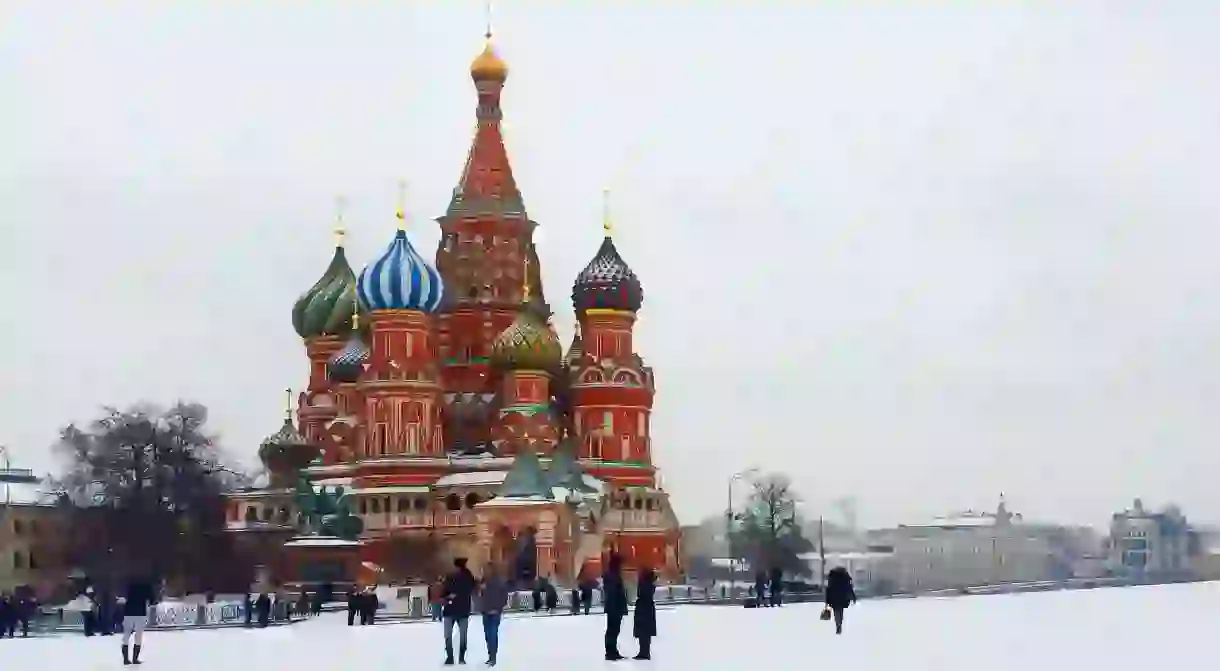7 Moments That Defined Moscow, Russia

Moscow is one of the most important cities in the world. Today, it is a vibrant city which never sleeps; it is full of life, culture, commerce and not devoid of political importance. It is a city full of history as well; the first mentions of it appear as early as 1147. The city has been through a lot. Here are the pivotal moments which defined Moscow as we know it.
Moving the Patriarchate of the Russian Orthodox Church to Moscow (1325)
Even though Moscow was first mentioned in the sources in the mid-12th century, it gained importance in 1325, when the Metropolitan of the Russian Orthodox Church decided to move the Patriarchate of the Church to Moscow. It added the city an immense amount of prestige and importance. Ever since then, Moscow started to be viewed as “The Third Rome,” and it set it on the path to the grandeur we know it for today.

Polish-Lithuanian Take Over Moscow (1610 – 1612)
The unconquerable city was conquered only once – by the Polish-Lithuanian Commonwealth. The joint army took advantage of the chaos which broke out after the death of Ivan the Terrible. The Poles were supporting the impostors to the Russian throne with the goal to ultimately put the crown on the head of their own king, Sigismund III. Those attempts proved unsuccessful, and the Polish army was expelled from the Kremlin by an army led by Prince Dmitri Pozharsky and Kuzma Minin. The anniversary of this event is, up to this day, one of Russia’s most important public holidays, and the statue of Minin and Pozharski is Moscow’s most recognisable monument.

The Capital Becomes Degraded (1712)
Moscow’s importance in the country plummeted in 1712 when Peter the Great moved the capital from Moscow to St. Petersburg. Peter the Great’s ambitious plan was to modernise every aspect of life in Russia. Creation of its capital from scratch, according to the newest trends in urban development, was just one of his multiple endeavours. The creation of St. Petersburg started the centuries-long rivalry between the two capitals which has not ceased to this day.

Napoleon Conquers the City (1812)
Moscow saw taken over by one more foreign army. In 1812 the entire city was evacuated before the entrance of the French Army, which had just won the Battle of Borodino. Much of Moscow’s old architecture was destroyed in the fires, and the fact that the French Army was stationed in the abandoned city for a while reflected in the city’s identity.

Opening the Metro (1935)
After the revolutions of 1917, the new Soviet authorities moved the capital back to Moscow and started re-shaping the city to their liking. Arguably, however, nothing influenced the city and its identity as much as the construction and the opening of the metro. Today, the metro consists of more than 200 stations and is the main means of transport for almost everybody’s daily commute. It is also one of Moscow’s principal landmarks. The metro like nothing else shaped the identity of Moscow today.

Blocks of Flats Blown Out (1999)
1999 was a year which shaped both Moscow and Russia as they are today. 1999 was the year when the second Chechen War broke out and when Vladimir Putin became appointed to be the successor of Boris Yeltsin at the post of the president. Putin gained popularity and influence due to decisive response to the Chechen war, and the war broke out after terrorist attacks on blocks of flats in Moscow (and a few other cities in Russia). Some evidence was later discovered which suggested that the attacks were staged by the Russian security service, FSB. Alexander Litvinenko, a former FSB officer who revealed that evidence, was poisoned with polonium on the territory of Great Britain a few years later. The 1999 bombings defined not only Moscow but entire Russia as well.

Cathedral of Christ the Saviour is Reconstructed (2000)
The Cathedral of Christ the Saviour was the most important temple of the Russian Orthodox church before the Revolutions. It was built in mid-19th century as a votive offering for the victory over Napoleon. Such a visible religious symbol in the very centre of Moscow was not to the liking of the new communist authorities, which ordered its demolition in 1931. They intended to construct the Palace of the Soviets there, topped with a figure of Lenin three times bigger than the Statue of Liberty. These plans were never realised, and the empty space was filled with a swimming pool for decades. The Church was reconstructed and re-consecrated in the year 2000. It marked a new era in Moscow architecture, characterised by more religious symbolism on the one hand and brand new glass-and-steel constructions on the other.














